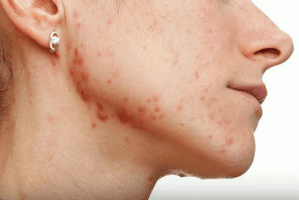
Solodyn Side Effects Cause Hyperpigmentation. Have you used Solodyn to treat acne and suffered hyperpigmentation? Lawyers at our firm who specialize in defective drug litigation are investigating reports of permanent hyperpigmentation linked to Solodyn. In some cases, Solodyn patients have had to undergo laser treatments to correct the skin discoloration caused by this drug. If […]

Solodyn Side Effects Cause Hyperpigmentation. Have you used Solodyn to treat acne and suffered hyperpigmentation? Lawyers at our firm who specialize in defective drug litigation are investigating reports of permanent hyperpigmentation linked to Solodyn. In some cases, Solodyn patients have had to undergo laser treatments to correct the skin discoloration caused by this drug.
If you or a loved one suffered pigmentation problems while taking Solodyn, you may be entitled to compensation. Our Solodyn hyperpigmentation lawyers are investigating this problem right now, and we are offering free lawsuit evaluations to anyone who has experienced this Solodyn side effect. We urge you to contact one of our Solodyn lawyers today to protect your legal rights.
Solodyn (Minocycline) is an antibiotic that is part of the tetracycline class of antibiotics. Solodyn is only approved for the treatment of pimples and red bumps (non-nodular inflammatory lesions) that happen with moderate to severe acne in patients 12 years and older. Various other types of minocycline medications are used to treat conditions like pneumonia, certain skin infections, and some cases of sexually transmitted diseases.
Tetracycline class antibiotics are known to cause hyperpigmentation. Hyperpigmentation is the darkening of an area of skin or nails caused by increased melanin. As early as 1997, adverse effects, including hyperpigmentation, were shown to occur at a much higher rate with minocycline than with other tetracyclines. The label for Solodyn lists tissue hyperpigmentation as a possible side effect of this drug.
“Tetracycline therapy may induce hyperpigmentation in many organs, including nails, bone, skin, eyes, thyroid, visceral tissue, oral cavity (teeth, mucosa, alveolar bone), sclerae and heart valves. Skin and oral pigmentation has been reported to occur independently of time or amount of drug administration, whereas other tissue pigmentation has been reported to occur upon prolonged administration. Skin pigmentation includes diffuse pigmentation as well as over sites of scars or injury.”
Three distinct types of skin pigmentation occur with Solodyn or minocycline use:
The most common side effects of Solodyn or minocycline are lightheadedness, dizziness, and fever. Other possible side effects of minocycline include headache, tiredness, stomach discomfort, diarrhea, irritation of the mouth including discoloration of the tongue and gums, oral thrush, and changes in hearing including tinnitus (ringing in the ears).
The personal injury attorneys at Parker Waichman LLP offer free, no-obligation case evaluations. For more information, fill out our online contact form or call 1-800-YOURLAWYER (1-800-968-7529).


